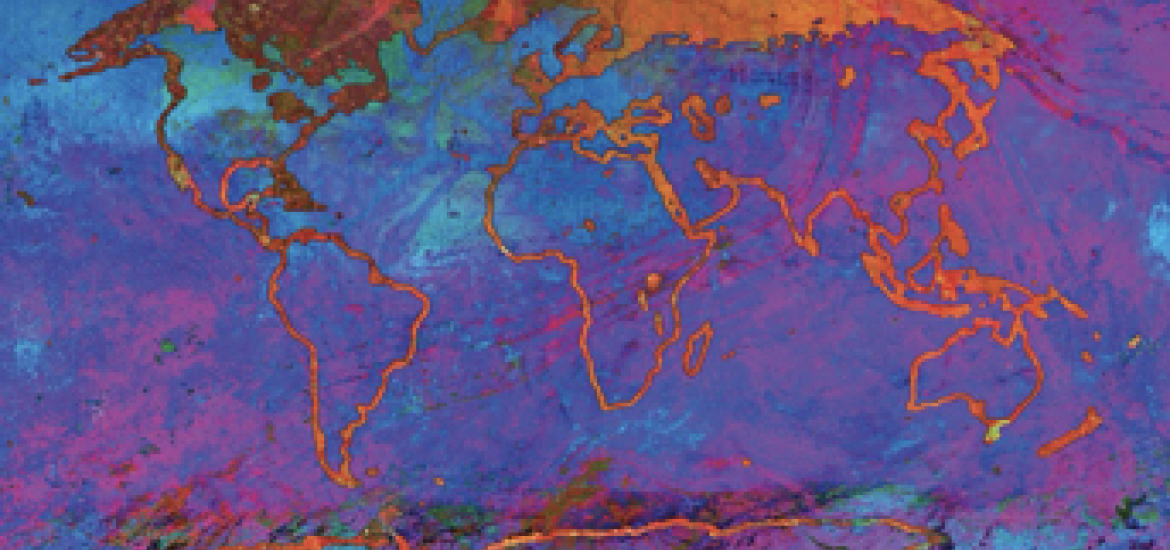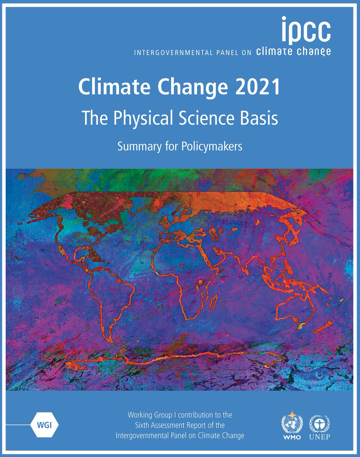- Home
- All News Overview
- IPCC’s Sixth Assessment Report (AR6)

Tuesday, 10 August, 2021
On 9 August, The Intergovernmental Panel on Climate Change (IPCC) released the Working Group I contribution to the IPCC’s Sixth Assessment Report (AR6). The AR6 will be completed in 2022.
The report details how changes in the Earth’s climate are taking place across the globe, and across the entire climate system. In particular, the IPCC AR6-WGI is a scientific view on climate change from the past through to the present day, and into the future.
Darrell Kaufman, former PAGES SSC and EXCOM member, Regents' Professor at the School of Earth & Sustainability at Northern Arizona University and lead author of chapter 2 of the IPCC AR6-WGI has prepared an index to where paleoclimate can be found in the Summary for Policy Makers and how it relates to the underlying report:
Interested in finding paleoclimate information in the new #IPCC AR6-WGI #ClimateReport? There’s no chapter dedicated to paleoclimate, as there was in previous reports. Instead, it’s distributed throughout, as part of multiple lines of assessed evidence.
Here’s some pointers on where to find paleoclimate content. It starts with the Summary for Policy Makers, information that is of particular interest to policy decisions, and then the Technical Summary, the tip of the 12-chapter iceberg that underpins the report.
SPM A.2.2 is selected statements from Ch 2 on increasingly UNPRECEDENTED CHANGES across the climate system over centuries to millennia (see Ch 2.2 for forcings, 2.3 & Fig 2.34 for indicators). Fig SPM.1 & CSB TS.1 place instrumental temperature into long-term context.
SPM A.4.4 presents the AR6 assessed value for EQUILIBRIUM CLIMATE SENSITIVITY. Paleoclimate evidence is a key constraint, as presented in Ch 7 (7.5.3, 7.5.6) and summarized in TS.3.2.1.
SPM B.1.1 is on global temperature projections, with comparisons to warm paleo reference periods. Fig TS.1 shows CENOZOIC TEMP AND CO2 HISTORY compared with projections. Fig TS.9 depicts greenhouse gases across time scales. TS.2.2 summarizes changes in CLIMATE DRIVERS.
SPM B.5.1 is on IRREVERSIBILITY OF OCEAN & CRYOSPHERE CHANGES over centuries to millennia, grounded in paleo understanding from Ch 9 (9.2.2.1, 9.2.3.2). B.5.4 is projections of sea level rise, with comparisons to warm paleo reference periods (Box TS.4, Ch 9.6.2, 9.6.3.5).
SPM C.3.4 & C.3.5 are on LOW-LIKELIHOOD, HIGH-IMPACT OUTCOMES, including effects of AMOC collapse and a sequence of large volcanic eruptions, respectively, grounded partly in paleo information in Ch 8 & 9, and CCB 4.1.
TS Box TS.2 brings together PROXY- AND MODEL-BASED estimates of global temperature for multiple paleo reference periods, along with CO2 and sea level. Additional paleo data-model comparisons are in Ch 3 (3.3.1.1, 7.4.4.1.2, 7.5.6 for temp, 3.8.2.1 for multiple variables).
Ch 2 CCB 2.1 describes the PALEOCLIMATE REFERENCE PERIODS used in the report and points to other sections where the periods are discussed. PMIP4 and PMIP3 MODEL OUTPUT for four reference periods (temperature & precipitation) is available through the Interactive Atlas.
TS Box TS.2, along with Ch 1.5.1.1 (paleoclimate), highlight other NEW PALEO FINDINGS from several chapters, including the carbon and water cycles (Ch 5 & 8). The context for paleoclimate science is described in Ch 1.3.2.
FREQUENTLY ASKED QUESTIONS that focus on paleoclimate include, FAQ 1.2, “What can past climate teach us about the future?” and FAQ 2.3, “Earth’s temperature has varied before. How is the current warming any different?”
Author attribution: Darrell Kaufman
We would like to take this opportunity to congratulate everyone that contributed to this relevant and important work.
Access the full IPCC AR6-WGI report here
Read the press release here
